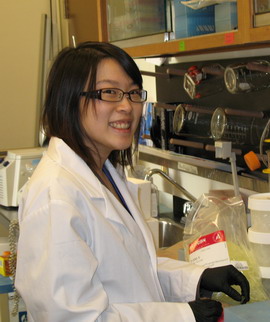 Contact
Contact
Email
Phone:
Training
2007 – 2012
Ph.D. , Institute of Biomaterials and Biomedical Engineering, University of Toronto
Supervisors: C. Simmons, L. You
2003-2007
B.A.Sc., Engineering Science – Biomedical Option, University of Toronto
Project
Effects of mechanical stimuli on osteocytes in the regulation of endothelial cells and osteoclast precursor recruitment
Osteocytes (OCYs) are believed to sense loading-induced fluid flow in their canaliculi network and transduce the signals to osteoclasts (OCs) and osteoblasts to regulate bone resorption and formation. In vivo studies have shown that bone disuse (corresponding to no flow conditions in in vitro studies) causes OCY apoptosis, which precedes OC activity at the local remodeling site. However, the specific mechanism by which osteoclast precursors (OCPs) are transported from the bone marrow to the site of remodeling in response to flow conditions is not clearly elucidated.
OCPs travel from the bone marrow to the local site of remodeling via blood vessels. In order for OCPs to reach the local site of remodeling, they must travel from the capillary across the Haversian canal to the adjacent bone lining surface. While bone capillaries are on average of 8 µm in diameter and human Haversian canals range from 30-170 µm in diameter5, OCPs would have to migrate unreasonable large distances to reach their destination. This suggests that without angiogenesis (local endothelial cell (EC) proliferation, migration and tubule formation) OCPs will have great difficulty reaching the targeted remodeling site. In this study, we examine the role of oscillatory fluid flow on OCY apoptosis and the downstream EC response to aid in the transport of OCPs. We hypothesize that OCY apoptosis is a flow-regulated process and that apoptotic OCYs will play a critical role in initiating and regulating angiogenesis to provide a conduit for OCP transport.